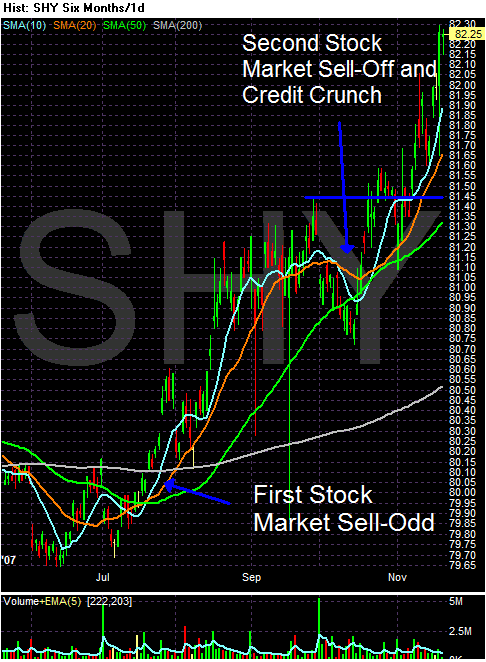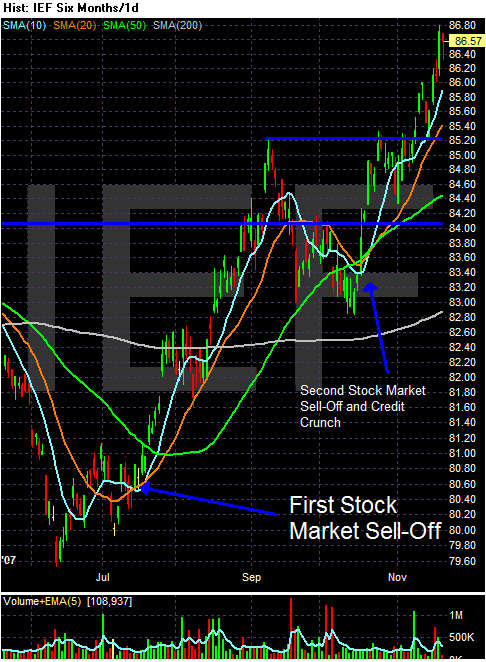U.S. Treasuries surged, sending 10- year yields below 4 percent for the first time in more than two years, as a decline in global stocks spurred demand for the safety of government debt.
Notes climbed as U.S. stock futures dropped to near three- month lows and oil approached $100 a barrel. The spread, or difference in yield, between two- and 10-year Treasuries widened to the most since January 2005 as investors favored safer, shorter-dated assets.
``The oil price hurt equities, and now we're back on the risk trade supporting'' U.S. notes, said David Keeble, head of fixed-income strategy at Calyon, the investment-banking arm of Credit Agricole SA, France's second-biggest bank. ``Everybody's rushing to the front end.''
The truth is Treasuries have been rallying since the first market sell-off in July.

The ETF for short-term treasuries (1-3 years) shows a strong rally in place as investors look for a safe place to park money.

The 7-10 year Treasury ETF also shows a strong rally for the same reasons.
It's important to remember there are several overarching themes that drive fixed income investing.
1.) Overall interest rate policy. As the fed cuts rates, bonds that were issued before the cut become more valuable because they have a higher coupon. As the Fed increases interest rates, bonds issued before the rate increase are less valuable because they have a lower coupon.
2.) Inflation expectations: Because bonds pay a fixed amount of interest, an increase in inflation decreases overall return for fixed income investing.
3.) Risk perception: Treasuries are considered ultra-safe investments. Therefore, when investors are concerned about risk they tend to flock to Treasuries for their overall safety.
These reasons vary in importance. For example, my guess is that right now the overall financial risk in the system is one of the primary reasons people are moving into bonds. Traders/investors are concerned about the stock market's volatility and overall direction. Investors are also concerned about the underlying strength of the economy. Therefore, they are moving into bonds.